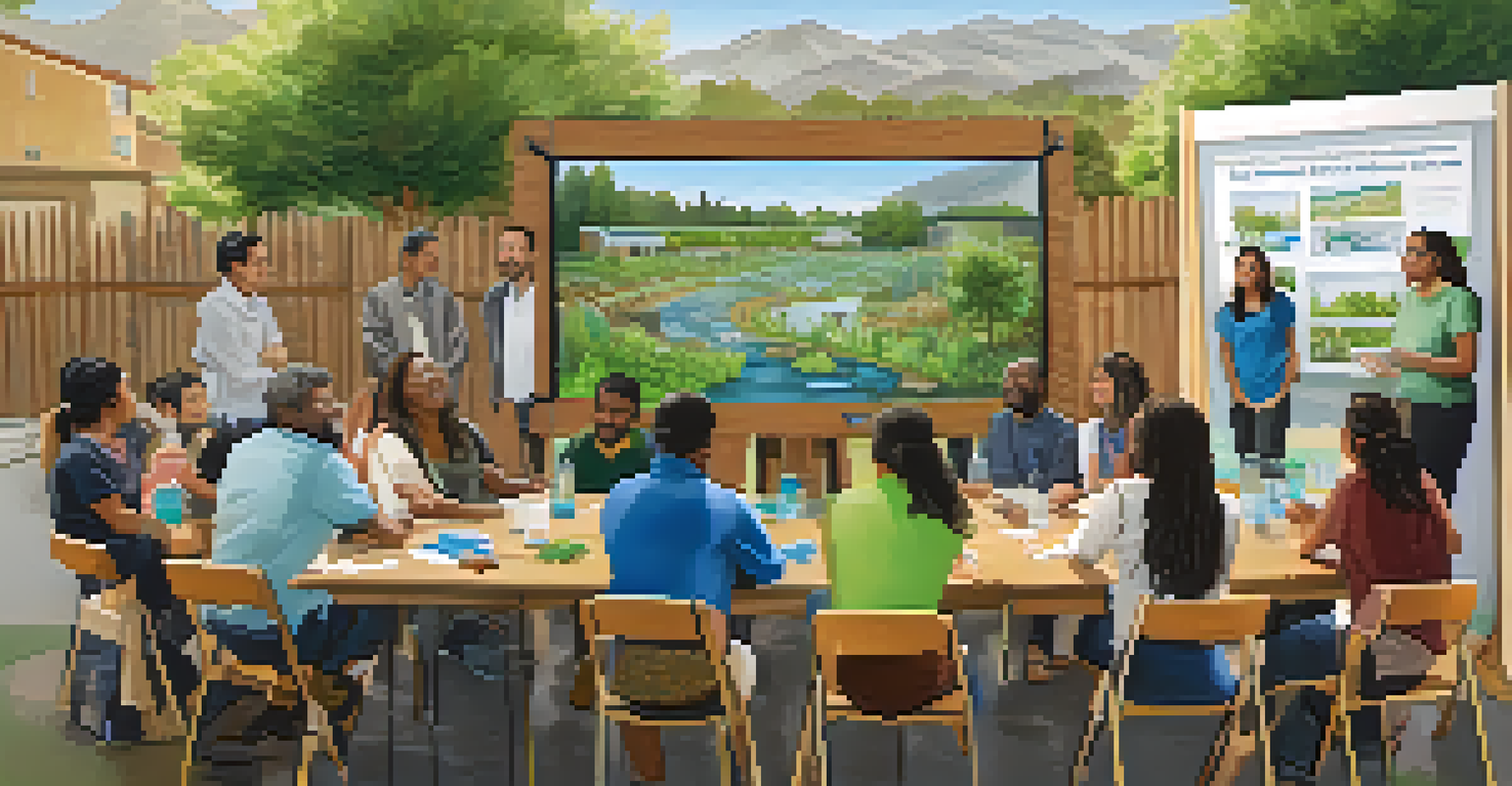Innovative Conservation Techniques for San Jose's Water Needs

Understanding San Jose's Unique Water Challenges
San Jose, nestled in the heart of California, faces a unique set of water challenges. The region's rapid population growth has led to increased water demand, putting pressure on existing resources. Additionally, the ongoing impacts of climate change, such as droughts, further complicate the situation. Understanding these challenges is the first step toward implementing effective conservation techniques.
Water is the driving force of all nature.
The city relies heavily on surface water and groundwater, both of which are susceptible to fluctuations in climate. Over-reliance on these sources can lead to significant shortages during dry seasons. This precarious balance highlights the need for innovative solutions that can ensure a sustainable water supply for the future.
By recognizing these challenges, San Jose is better equipped to embrace innovative conservation techniques that not only address immediate needs but also promote long-term sustainability. This proactive approach is essential for the city to thrive in a changing climate.
Rainwater Harvesting: A Simple Yet Effective Solution
One of the most effective methods for conserving water in San Jose is rainwater harvesting. This technique involves collecting and storing rainwater from rooftops, which can then be used for irrigation, flushing toilets, and even washing clothes. By capturing this free resource, residents can significantly reduce their reliance on municipal water supplies.

Rainwater harvesting systems are relatively easy to install and can be tailored to fit different household needs. Homeowners can choose from simple barrels to more complex underground tanks, depending on their space and budget. The beauty of this technique lies in its versatility and the immediate savings it can bring to water bills.
San Jose Faces Water Supply Challenges
Rapid population growth and climate change are straining San Jose's water resources, necessitating innovative conservation techniques.
Moreover, rainwater harvesting not only conserves water but also helps reduce stormwater runoff, which can lead to flooding and pollution. By implementing this practice, San Jose residents can contribute to a healthier environment while efficiently managing their water use.
Smart Irrigation Systems: Tech Meets Conservation
Another innovative technique gaining traction in San Jose is smart irrigation systems. These high-tech solutions utilize sensors and weather data to optimize watering schedules, ensuring that plants receive the right amount of water at the right time. This not only helps conserve water but also promotes healthier landscapes.
We never know the worth of water till the well is dry.
Smart irrigation systems can be programmed to adjust based on temperature, humidity, and rainfall, making them an efficient choice for both residential and commercial properties. For example, if rain is in the forecast, the system can delay watering, preventing water waste. This adaptability leads to significant water savings over time.
By investing in smart irrigation technology, San Jose can enhance its water conservation efforts while also encouraging residents to adopt similar practices. The integration of technology in everyday water management showcases a forward-thinking approach to addressing the city's water needs.
Recycling Water: A Sustainable Approach
Water recycling, or reclaimed water, is a major focus for San Jose as it seeks sustainable solutions to its water challenges. This process involves treating wastewater to a level that makes it safe for non-potable uses, such as irrigation and industrial processes. By reusing water, the city can significantly reduce its overall demand.
San Jose's water recycling program is designed not just to divert wastewater but to provide a reliable source of water for landscaping, parks, and even golf courses. This not only conserves potable water but also helps maintain green spaces, which are vital for the community's well-being. The concept of 'waste not, want not' is particularly relevant here.
Rainwater Harvesting Saves Resources
Collecting rainwater from rooftops allows residents to reduce their dependence on municipal water supplies while promoting environmental health.
As water recycling becomes more widespread, it paves the way for a future where the city can thrive without over-exploiting its natural resources. This innovative technique exemplifies how San Jose is adapting to its water needs while promoting environmental sustainability.
Community Engagement: Spreading Awareness and Involvement
Innovative conservation techniques are most effective when the community is engaged and informed. San Jose has made strides in promoting water conservation through educational programs and community workshops. These initiatives empower residents to understand their water usage and adopt sustainable practices.
By engaging the community, San Jose fosters a culture of conservation where individuals feel responsible for their water footprint. This can lead to collective action, such as neighborhood rain garden projects or community challenges to reduce water use. When people work together, the impact can be significant.
Moreover, incorporating local voices in water conservation discussions ensures that solutions are tailored to the community's specific needs. This collaborative approach not only builds trust but also enhances the effectiveness of conservation efforts.
The Role of Green Infrastructure in Water Management
Green infrastructure plays a crucial role in enhancing San Jose's water management strategies. This approach incorporates natural systems, such as green roofs, permeable pavement, and rain gardens, to manage stormwater and reduce runoff. By mimicking natural processes, these systems can improve water quality and conserve resources.
For instance, green roofs not only provide insulation for buildings but also absorb rainwater, reducing the amount that enters storm drains. Similarly, rain gardens are designed to capture runoff from impervious surfaces, allowing water to soak into the ground rather than causing erosion or flooding. These solutions are both practical and environmentally friendly.
Community Engagement is Vital
Involving the community in water conservation efforts fosters a culture of responsibility and leads to more effective sustainable practices.
Implementing green infrastructure not only addresses immediate water challenges but also enhances urban aesthetics and biodiversity. As San Jose continues to develop, integrating nature into its infrastructure will be key to sustainable water management.
The Future of Water Conservation in San Jose
As San Jose looks ahead, the future of water conservation will rely on a combination of innovative techniques and community involvement. By continuously exploring new technologies and practices, the city can adapt to changing conditions while ensuring a reliable water supply. The commitment to sustainability will set a precedent for other cities facing similar challenges.
Collaboration between government, businesses, and residents will be essential in implementing these strategies effectively. By working together, San Jose can create a comprehensive water conservation plan that addresses both current needs and future demands. This proactive approach will foster resilience in the face of climate change.

Ultimately, the success of San Jose's water conservation efforts will depend on the collective commitment to protecting this precious resource. With innovation, community engagement, and sustainable practices at the forefront, the city can navigate its water challenges and thrive for generations to come.